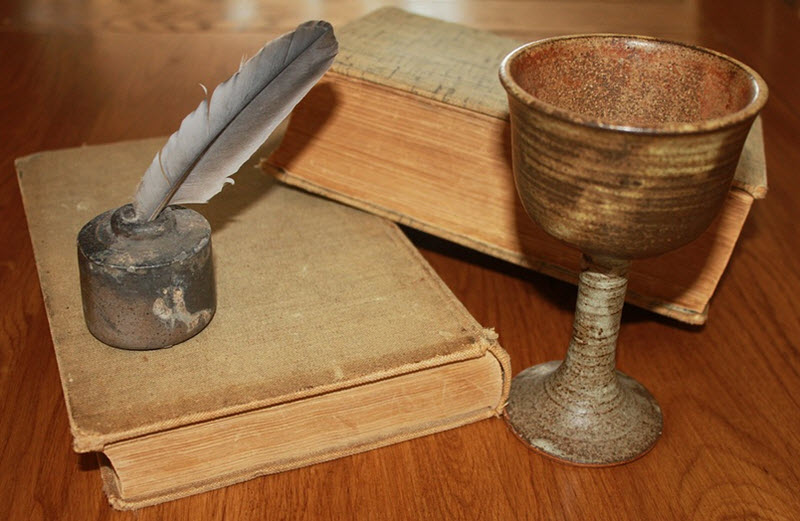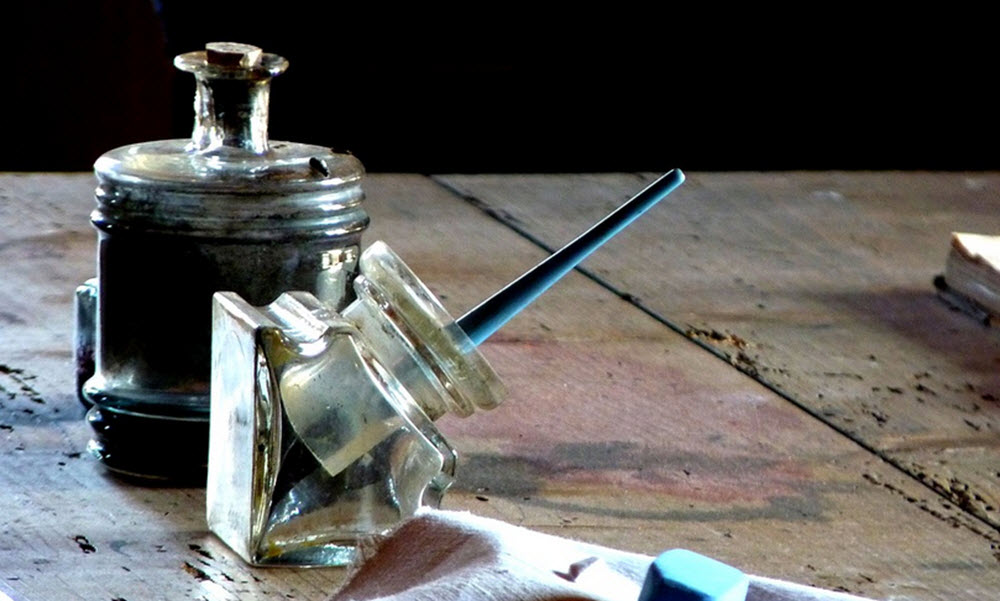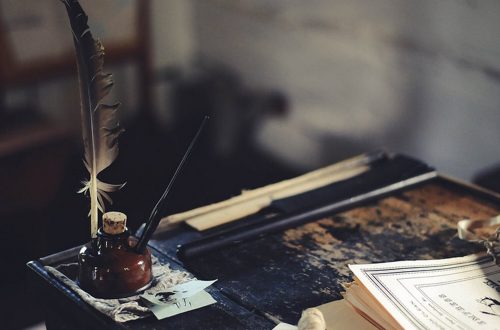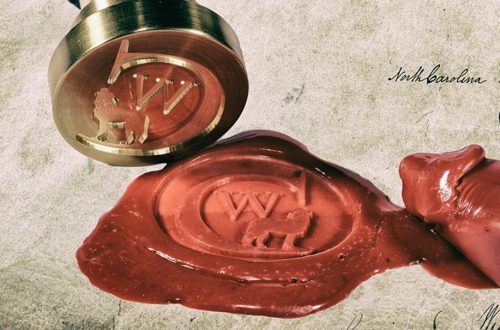Contents
An inkwell is a container used for holding ink. It is designed in a way that makes it easy to frequently dip a quill, pen, brush or similar into it while writing. When the writing session is over, the inkwell can be closed to safeguard the ink until the next session.
Before the advent of the reservoir fountain pen, the inkwell was an essential part of the classic setup for a writing desk, and even after shifting over to reservoir pens, some writers kept the inkwell at their desks as a source of ink for refilling the pen as needed.
Inkwells have been created from a wide range of materials, including porcelain, glass, silver, brass, and pewter, and expensive inkwells created from precious materials functioned as status symbols.
To prevent the inkwell from being knocked over, it was common for school desks in Europe and certain other parts of the world to feature a hole for the inkwell to fit into. During the Medieval era, such holes were also common in the slanted pulpits used by adult scribes, because back then ink was commonly kept in a horn that needed support to stand up. In some languages, the old term for inkwell still contains a part that means ”horn”, such as the German Titenhorn, the Swedish bläckhorn, and the Danish blækhorn.
Travel inkwell
The travel inkwell (also known as travelling inkwell) has an extra secure lid to prevent leakage.
Inkwell brands
The period from circa 1870 to 1920 can loosely be referred to as the golden age of inkwells, since more people could write than ever before and the dipping pens had not yet been replaced by the reservoir pen.
Examples of well known companies and brands that produced inkwells during this era are Tiffany, Dresden, Heintz, Loetz, Staffordshire pottery, Meissen, Baccarat, and Limoges. These inkwells were not just utilitarian – they were also meant as decorative objects for the writing desk. Today, inkwells surviving from this period are sought after by collectors, and you can expect to pay several hundred dollars at auction for brands such as Tiffany and Loetz.
Pounce pot
The inkwell has traditionally been accompanied by a pounce pot. The pounce pot held a fine powder, such as carefully ground cuttlefish bone, known as pounce.
The pounce had two main jobs:
- It was sprinkled on a rough writing surface to smooth it out before writing.
- It was sprinkled on ink to dry it.
Blotting paper was used as an alternative to pounce as early as the Tudor period, but pounce – and sand – remained popular throughout the 1800s as it was cheaper.
When pounce is used to dry ink, it is advisable to gently vibrate the paper as the pounce is sprinkled on. Once the ink is dry, the pounce is shaken off.
Surviving pounce pots from the 1800s typically have a shallow dish round the top, to make it easier to return the pounce to the pot and reuse it.

Iron gall ink (Common European ink)
Many cultures in various parts of the world have independently invented inks based on available ingredients. One example of a very early ink is lampblack, which is made from a kind of soot.
In Europe, the most commonly used ink from the 5th century CE to the early 20th century was iron gall ink. In many English texts, it is simply called standard ink, common ink, etc. It works well on both parchment and paper. Unlike India ink, iron gall ink can not be erased by rubbing or washing once it has dried.
Iron gall ink was a purple-black or brown-black ink made from iron salts, tannic acids from
vegetable sources, and a binder. The tannic acid was usually extracted from oak galls, but galls from other trees could also work. The most frequently used binder was gum arabic. A newly prepared iron gall ink would be pale grey, and it would take time for it to darken.
The use of iron gall ink eventually spread to many other parts of the world, including North America where the United States Postal Service had its own official recipe for a uniform iron gall ink used by all their post offices.






